Anything – an object, a melody, an odour, taste or texture has the ability to create within us an emotional response. This is particularly true of “stuff” created to do just that, such as the works we talk about here on Talking Beautiful Stuff. I think what happens is that somewhere, between our minds and the “stuff”, we meet with and acknowledge the story that it tells us. Often the intensity of our emotional response is greatly increased if we have some invested knowledge or particular interest in its story. For me, this is why some of us are driven to Talking Beautiful Stuff. We share the stories and our reactions because I believe it is important to do so. But what if “stuff” has been deliberately created to be ugly? What if its story were uglier still? I think that in these cases all that remains and will always be “beautiful” is the acknowledgement and subsequent understanding of the story. It was thinking about these issues that brought back a most peculiar and powerful memory of a visit to the Museum of Ethnography in Geneva during May 2008.
I was with Jenny as I entered a small, darkened gallery in the Museum. We were alone. Dim spotlights shone down vertically from the low ceiling illuminating what I can say with utter certainty were the most extraordinary objects that I have ever seen – and possibly the “ugliest.” My immediate reaction was revulsion, leaving me feeling strangely unclean by being near these objects. I would not dream to speak of another’s emotional reaction but I can say that Jenny, unsurprisingly, did not care to join me for a second look at this gallery! I, however, was being powerfully drawn back.
This time I stood alone amongst the objects – ranks of life-sized figures like an army of corpses staring blankly from mirror eyes. I felt almost claustrophobic and close to panic which surprised me as in my former occupation I’ve policed, alone at night, mean city streets, but this was beyond my experience. I needed to understand what these awful things were and their story. I saw clever artistry at work creating what I felt were deliberately ugly and horror-invoking faces with pure malice sneering from their mouths. Each face was built around a human skull but it seemed that the medium used to create these creatures was dictated by other forces rather than the creators’ choice. My invested knowledge told me that this force was devastating poverty. The bodies of the figures were made of old clothes, stuffed like a child’s Guy Fawkes with stuffed gloves for hands. They were crudely painted in red and black and were dirty, old, malevolent, horribly creepy and profoundly mysterious.
This was a small army of “Bizango” from Haiti and were part of the first ever exhibition of Haitian artifacts associated with the Voodoo religion. The exhibition was titled – Le Vodou, un art de vivre. Truly, it remains the most extraordinary exhibition I have ever had the privilege to witness, particularly as all the exhibits were of a deeply religious, ritualistic, superstitious and personal significance to their creators. Invested knowledge, from years of reading about Voodoo, made me feel uncomfortably like a peeping Tom. In fact, I learned from an Haitian guide at the museum that objects were only given up because of poverty and the fact that collectors would pay for them.
The true and full meaning of the “Bizango” figures may never be known except to those who created them in secret places in the Haitian countryside, after dark. Serious researchers meet with real fear, secrecy, misinformation and even threats of violence when trying to probe this subject. What I tell you now is what my researches have revealed but it could be off the mark. Bizango are secret organisations who operate an unofficial justice system working on secret, social levels in this most enigmatic and unusual society. Voodoo, as a religion, has little to do with Bizango except that the two are part of and mingle within the one social structure. The figures represent the dead fighters of the Haitian revolution of 1791 – 1804. This amazing revolution in the richest slave economy on Earth, strengthened by the cohesive power of Voodoo, beat Napoleon’s powerful French Empire and created the first Black Democracy in the New World. I think that the figures represent the idea of a spiritual judge with ancient credibilty and act as the physical focus of that idea at trials. Wrongdoers are tried by the Bizango court and if found guilty, sentenced. Zombification is the worst sentence. This is a fate worse than the death penalty as it involves being killed by poisoning, being buried then dug up and resurrected to a mindless half-life of slavery to another. Please suspend forever your disbelief on this – we are talking about Haiti. I admit that I have never been there but the more I learn about Haiti the more questions I need to ask and the answers are rarely easy on the mind or the heart.
Here I am talking undeniably and deliberately ugly stuff. Its story too is ugly, being born from the ugliness of slavery, the ugliness of a war of revolution, the ugliness of corrupt government and crippling poverty. From my research I cannot be sure that even the idea of justice meted out by the Bizango secret societies is altogether positive. So how do I justify posting this on Talking Beautiful Stuff
I looked at and considered the string holding these figures together, the old, stuffed clothes, the childish poses which the medium dictated, the skulls of forgotten Haitians but above all the need that drove the making of such hideous creations. I added what I saw to my invested knowledge and this led me to meet with and acknowledge their story. My understanding of that story, I feel, is the “beautiful” thing. I believe this because I wept with pity and I still weep when I think about it.
- Exhibition: Le Vodou un art de vivre – 5 December 2007 – 31 August 2008 – Musee d’ethnographie de Geneve, 65 Bd Carl Vogt, CH – 1205 Geneve
- Book/Catalogue: Le Vodou un art de vivre – Under the direction of Jacques Hainard and Philippe Mathez. Photographs by Johnathan Watts. ISBN 978-2-88474-074-6 Published by: Musee d’ethnographie de Geneve 2007
- All photographs in the post are from this book.
- Recommended further reading: The Serpent and The Rainbow by Wade Davis – William Collins Sons Co Ltd 1986

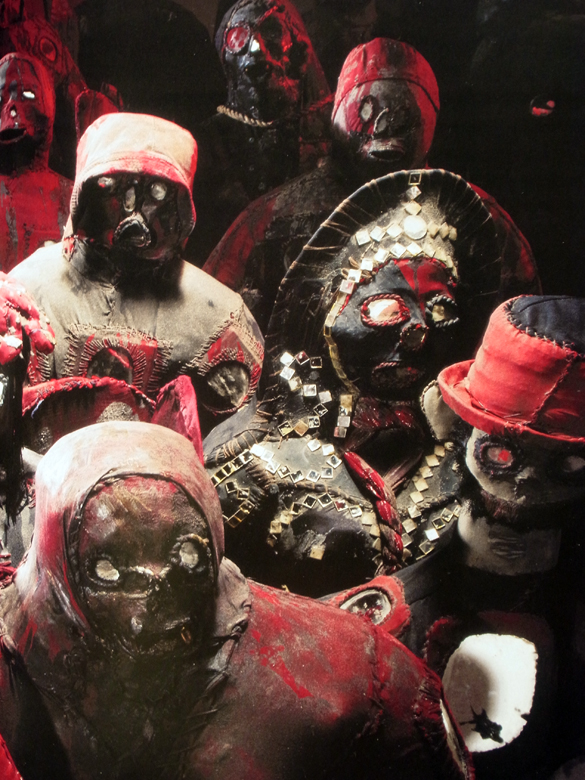
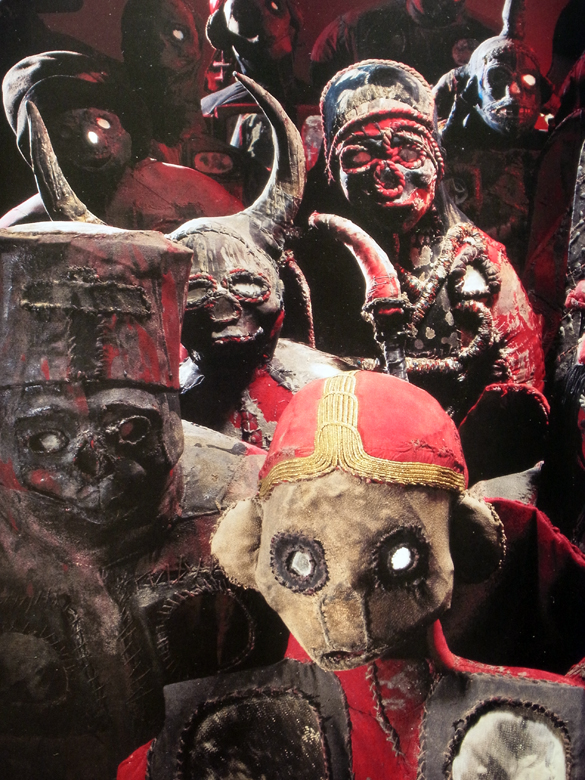
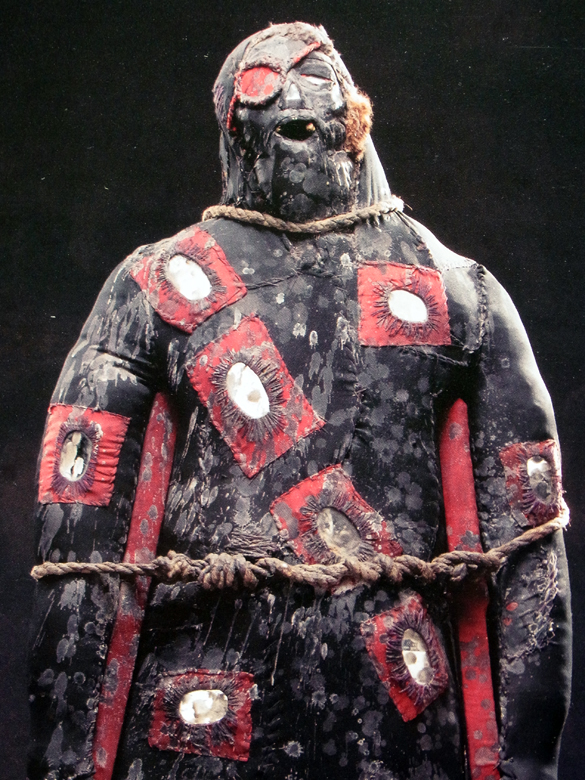
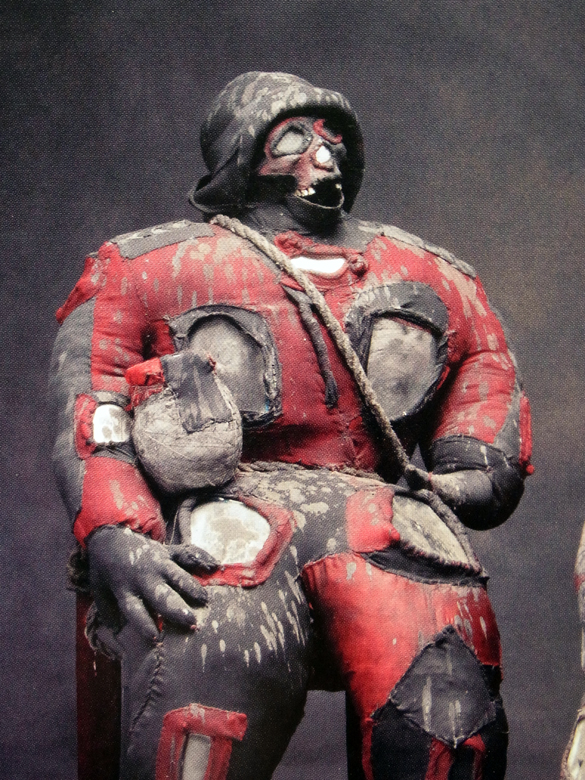
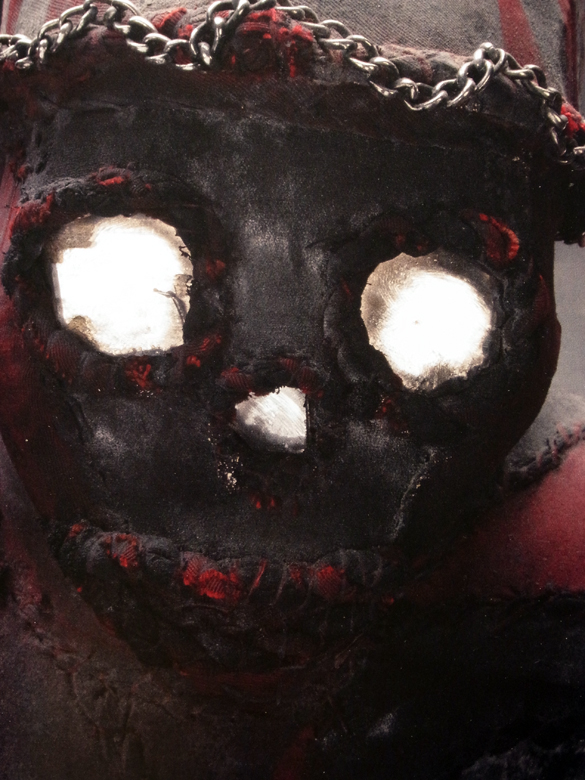
Hey Garth, thanks a lot for this read. Interesting and creepy at the same time. Ugh!